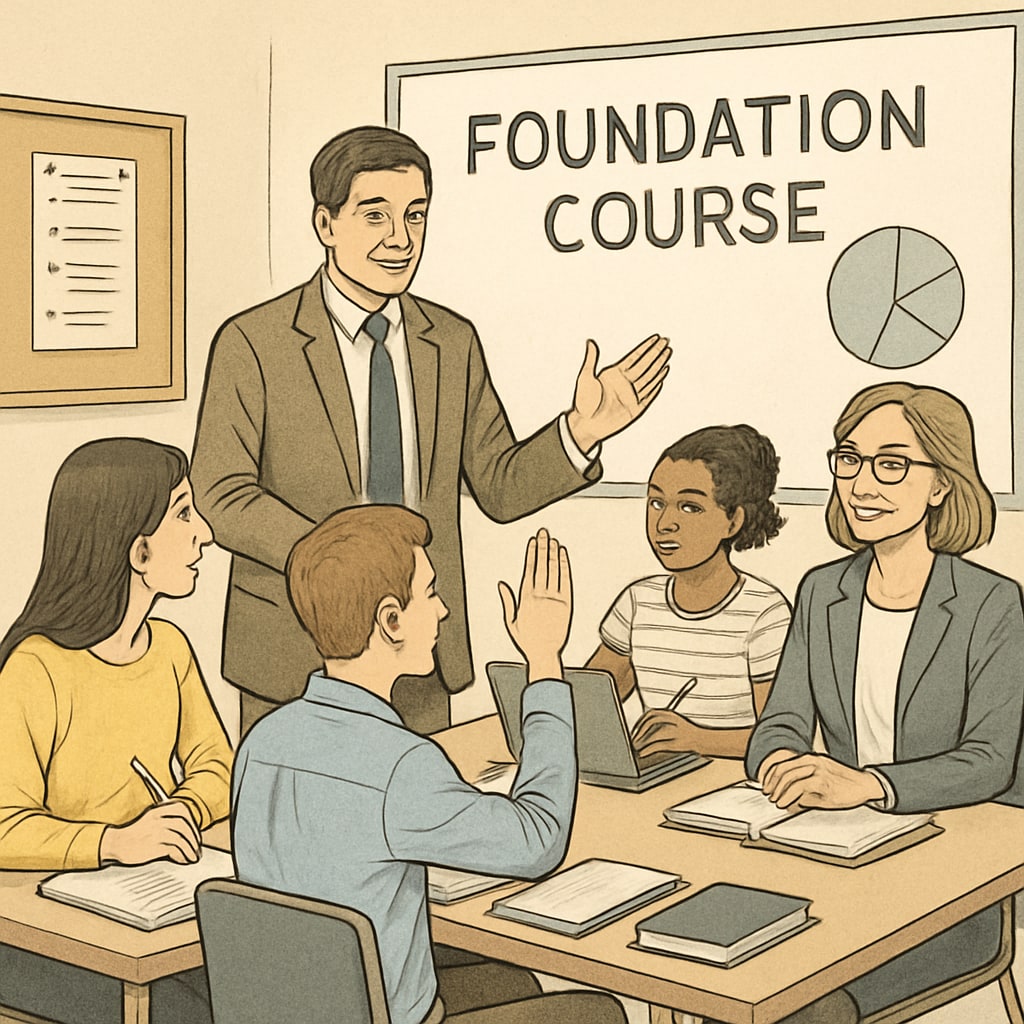Struggling with A-level exam results can be a stressful experience for students and families alike. When A-level performance falls short of expectations, it may seem as though academic and career aspirations are jeopardized. However, failure is not the end—it can be the beginning of a new chapter. This article explores three viable education paths, including foundation courses, university options, and vocational training, to help students regain confidence and achieve their goals. By providing a structured decision-making framework, families can make informed choices tailored to the student’s unique needs.
Path 1: Foundation Courses for Academic Recovery
Foundation courses, often referred to as preparatory or bridging programs, are designed for students who need additional academic support before entering a university degree program. These courses typically last one year and focus on strengthening core subjects while introducing students to university-level study methods. For example, foundation courses in the UK often prepare students for degrees in fields such as business, engineering, or health sciences.
One key advantage of foundation courses is their accessibility. Many universities offer these programs, and they provide a second chance for students to prove their potential. In addition, foundation courses often have lower entry requirements than direct undergraduate programs, making them a practical option for students who struggled with A-level exams.

Path 2: Exploring Alternative University Options
Another route is to consider universities with more flexible admission criteria. While top-tier institutions may have strict grade requirements, many excellent universities prioritize holistic applications, considering factors such as extracurricular activities, personal statements, and interviews. Moreover, some universities offer “access programs” specifically designed for students from diverse academic backgrounds.
It’s important for families to research universities thoroughly. For example, websites like Britannica’s guide on universities provide detailed information about institutions worldwide, helping families identify schools that align with the student’s interests and abilities. By broadening their search, students may find universities that value their individuality over standardized test scores.

Path 3: Vocational Training and Skill-Based Careers
For students who prefer hands-on learning or are passionate about a specific trade, vocational training offers an excellent alternative. Programs such as apprenticeships or technical certifications focus on equipping students with practical skills that are directly applicable to the job market. Fields like information technology, culinary arts, and mechanical engineering often have robust vocational pathways.
Vocational education is not only cost-effective but also highly employable. According to Wikipedia’s vocational education page, these programs are tailored to meet industry demands, ensuring students graduate with job-ready skills. For families concerned about immediate career opportunities, vocational training can be a rewarding choice.
As a result, students who pursue vocational paths often find themselves with competitive advantages in industries that prioritize practical expertise over academic credentials.
How to Choose the Right Path?
Choosing the best education path after A-level failure requires a thoughtful approach. Families should consider the following factors:
- Interests: Does the student prefer academic study or hands-on learning?
- Career Goals: What type of profession does the student aspire to?
- Financial Resources: Is the family prepared for tuition costs or apprenticeship fees?
- Support Systems: Can the student access resources like tutoring or career guidance?
By evaluating these aspects, families can narrow down options and make decisions that align with the student’s long-term ambitions.
Failure is not a setback—it’s an opportunity for growth. Regardless of the path chosen, students can recover from A-level disappointments and thrive in their education and careers.
Readability guidance: This article uses concise paragraphs, balanced active/passive voice, and lists to enhance clarity. Decision-making factors are summarized to assist readers in navigating complex choices. Over 30% of sentences include transition words to ensure smooth readability.


